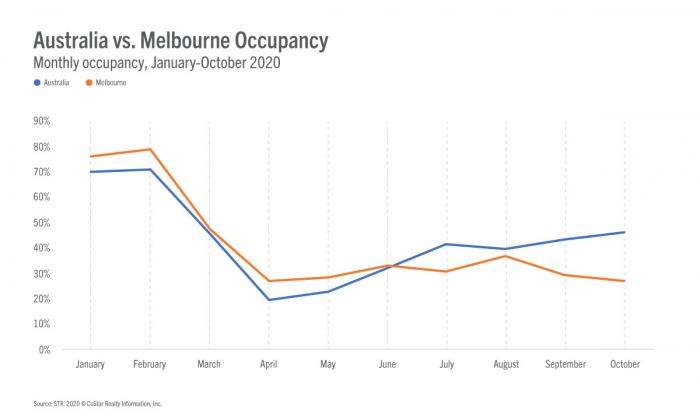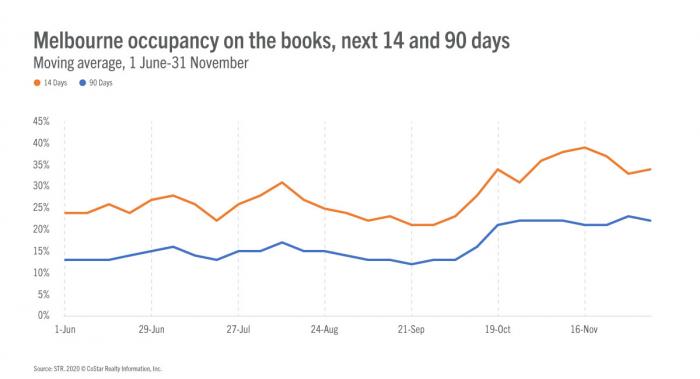Australia has been much more successful than most countries when it comes to COVID-19 case mitigation. As a result, the country has been able to operate with a greater sense of normalcy, as evidenced by sports stadiums packed with fans, restaurants full of customers and travelers moving around the country to stay in hotels.
Australia is a vast land, and restrictions have varied by state and in their impact on hotels. Victoria, the epicentre of Australia’s second wave, went into lockdown for 111 days until the end of October, while other states saw looser restrictions and a return of travel and demand. In Victoria’s capital, Melbourne, occupancy has been trending well below the rest of the country since June as travelers opted for less-restricted cities or regional markets with more open space. The latter is a trend we have seen in many parts of the world.

